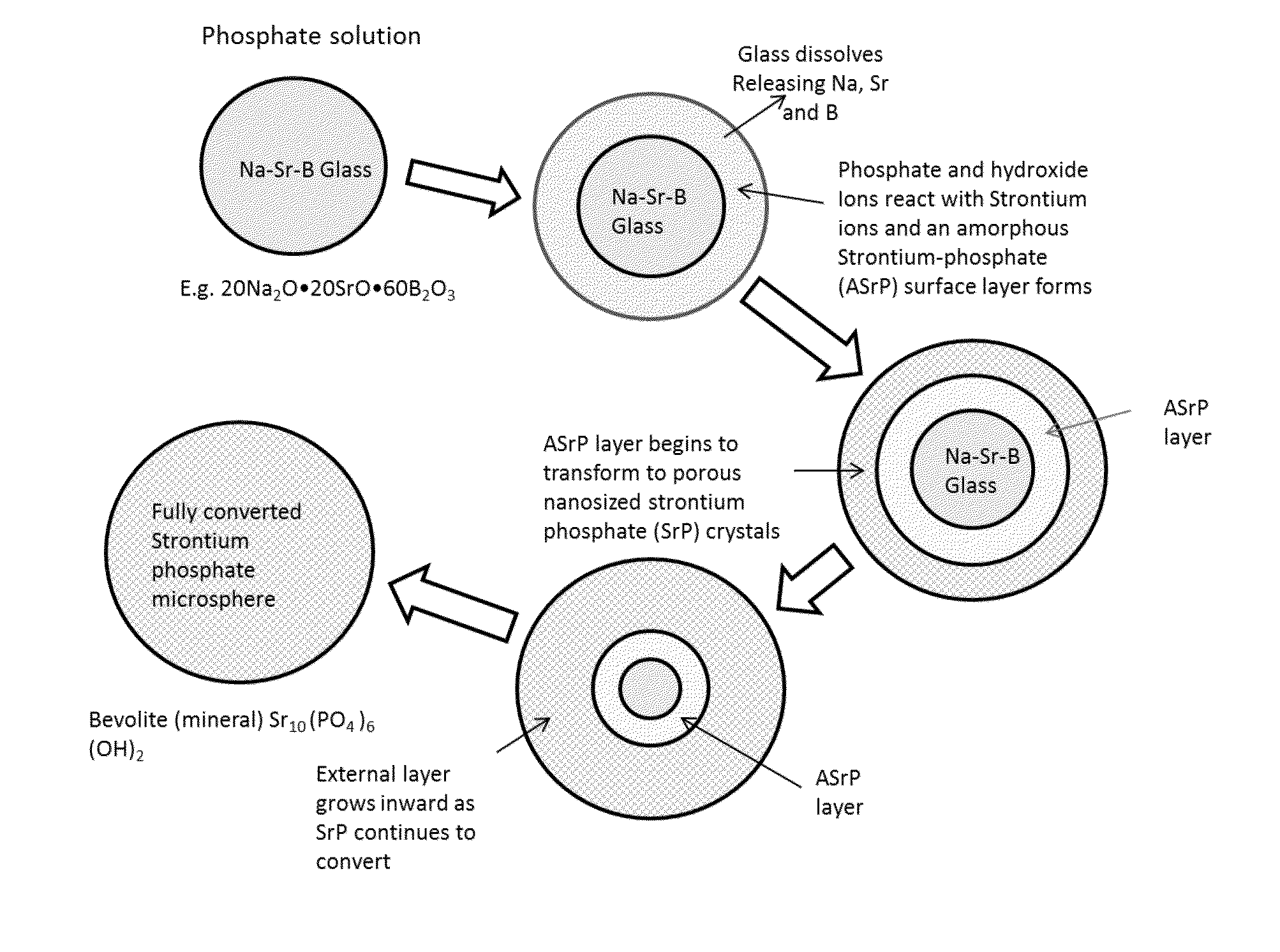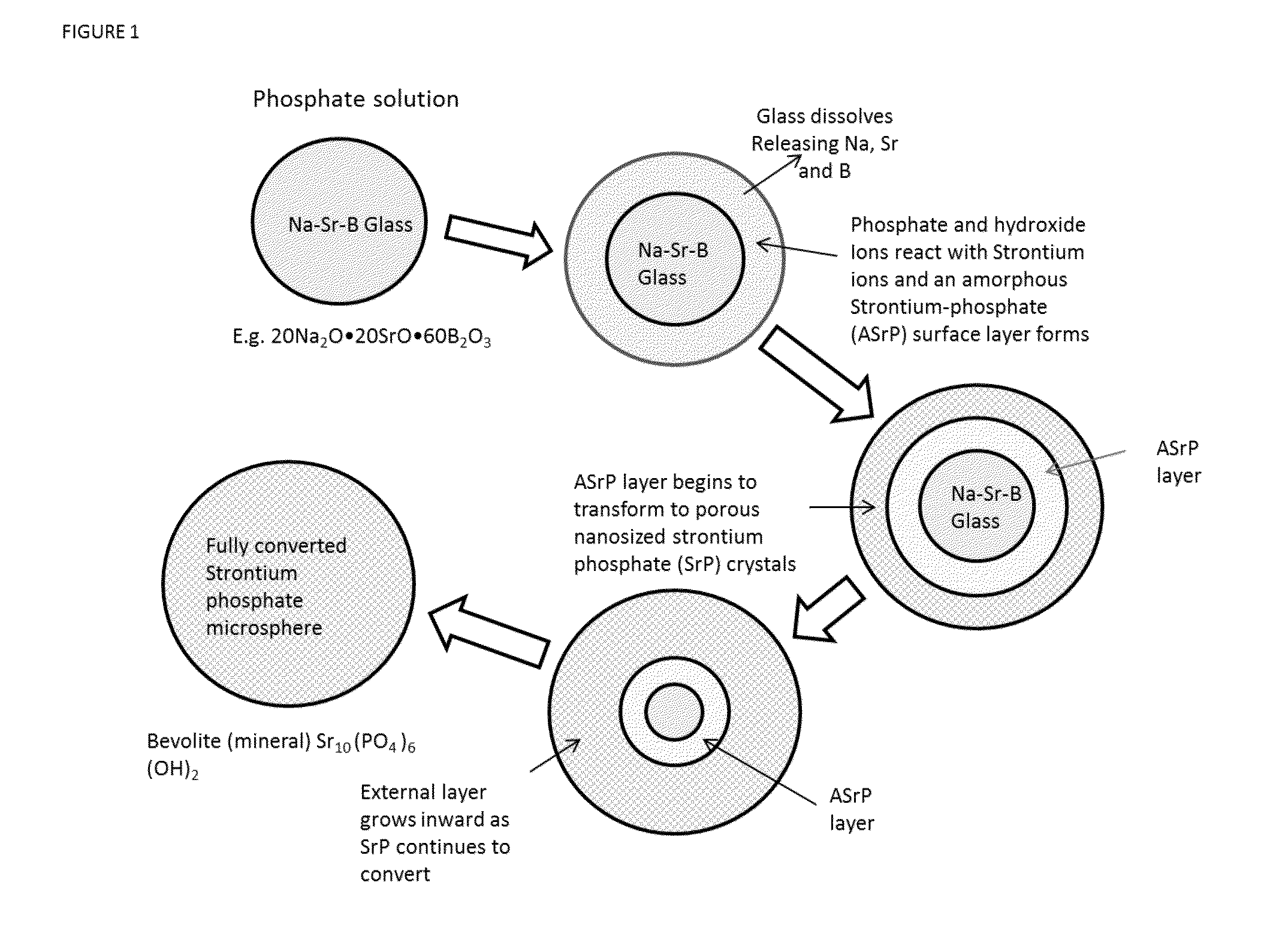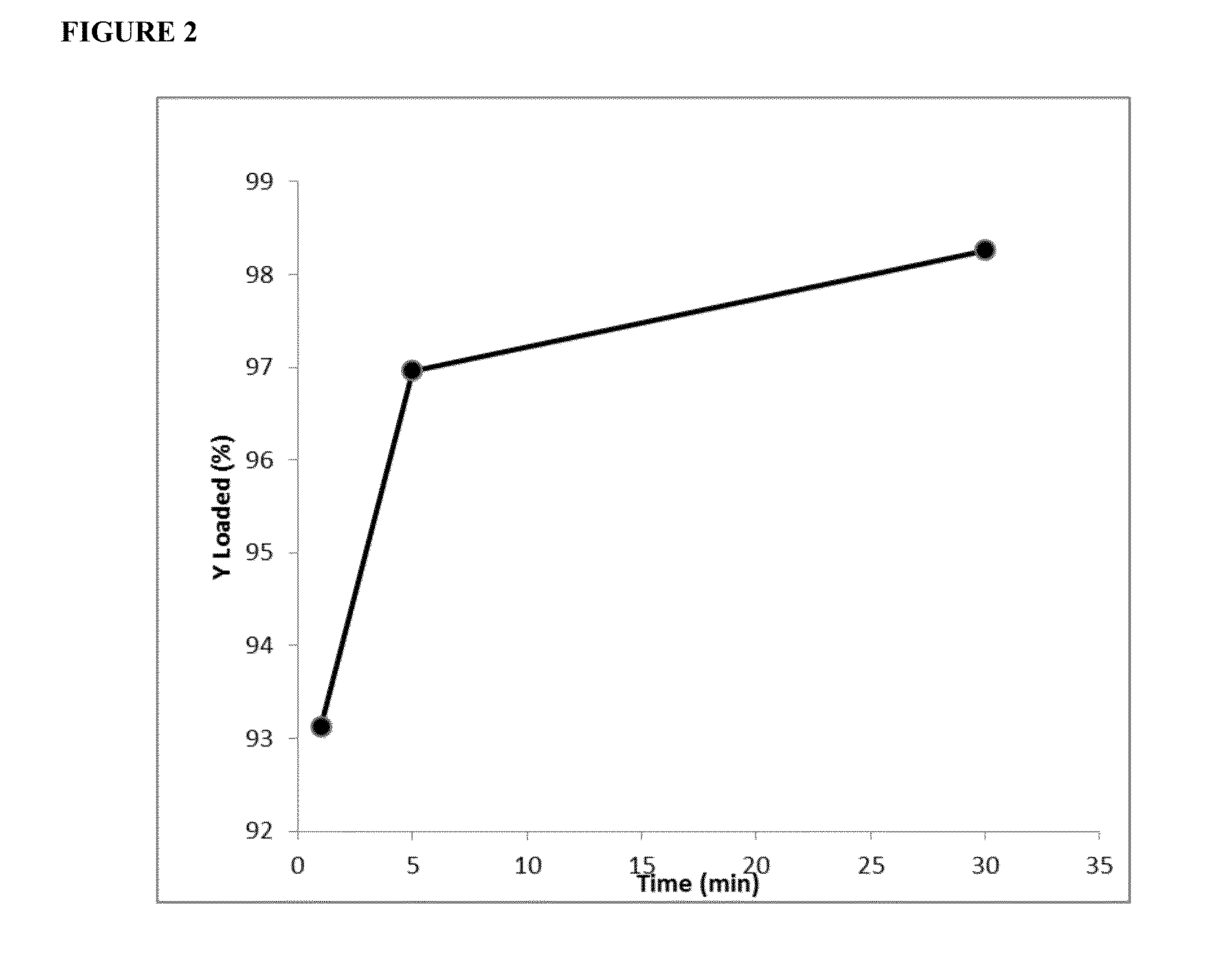Strontium phosphate microparticle for radiological imaging and therapy
a radioactive strontium phosphate and microparticle technology, applied in the direction of cellulosic plastic layer products, uranium compounds, therapy, etc., can solve the problems of limited selection of radionuclides available for use, lack of flexibility to control dose or radionuclide depending, etc., to reduce time-related degradation of activated radiopharmaceuticals, reduce exposure to medical personnel, and increase radio-opacity
- Summary
- Abstract
- Description
- Claims
- Application Information
AI Technical Summary
Benefits of technology
Problems solved by technology
Method used
Image
Examples
example 1
Preparation of Strontium Phosphate Microspheres
[0099]Strontium containing borate glass microspheres were prepared from a batch comprising 20 mol % Na2O, 20 mol % SrO and 60 mol % Ba2O3 as described above. The microspheres ranged in size from 44 to 105 microns.
[0100]The microspheres were reacted with 0.25 molar K2HPO4 solution (pH=12) for 1 h, 6 h, and 72 hrs at 85° C. After rinsing and drying, the surface area was measured by nitrogen absorption using a Micromeretics Tristar 3000 device. Multiple samples were measured and averaged. The measured surface area was 10, 93, and 72 m2 / gm, respectively.
example 2
Loading Strontium Phosphate Microspheres with Radioisotopes
[0101]A solution of 5 ug yttrium (Y-90) chloride in 0.5 ml of 0.05N HCl was added to 15 mg of microspheres and incubated for 30 minutes. The amount of yttrium loaded into the microspheres was determined at 1, 5 and 30 minutes in 5 replicates and averaged. Up-take of the yttrium with time is shown in FIG. 1.
PUM
| Property | Measurement | Unit |
|---|---|---|
| surface area | aaaaa | aaaaa |
| diameter | aaaaa | aaaaa |
| diameter | aaaaa | aaaaa |
Abstract
Description
Claims
Application Information
 Login to View More
Login to View More - R&D
- Intellectual Property
- Life Sciences
- Materials
- Tech Scout
- Unparalleled Data Quality
- Higher Quality Content
- 60% Fewer Hallucinations
Browse by: Latest US Patents, China's latest patents, Technical Efficacy Thesaurus, Application Domain, Technology Topic, Popular Technical Reports.
© 2025 PatSnap. All rights reserved.Legal|Privacy policy|Modern Slavery Act Transparency Statement|Sitemap|About US| Contact US: help@patsnap.com



